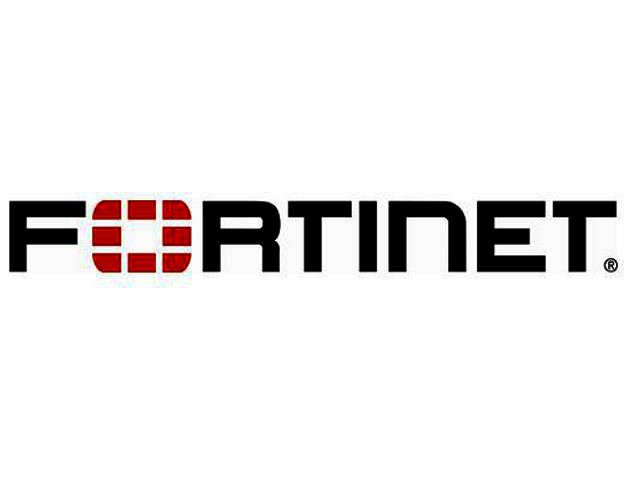Fortinet - the global leader in high-performance cyber security solutions, announced its new Software-Defined Network Security (SDNS) framework – the first of its kind across the industry - designed to provide advanced threat protection through the integration of security in the modern, agile data centre environment. This new framework provides a clear vision and actionable steps in delivering a comprehensive approach to securing the data centre, while providing the most extensible platform for infrastructure integration with technology partners including HP, Ixia, PLUMgrid, Pluribus Networks, Extreme Networks and NTT. SDN Security redefines advanced cyber security in a world where data centres are being transformed by the adoption of virtualization, cloud computing, and now software-defined networking.
“Information security infrastructure is too rigid and static to support the rapidly changing needs of digital business to provide effective protection in a changing threat environment,” wrote Neil MacDonald, vice president and distinguished analyst, Gartner Research. “Increasingly, security vendors are shifting more of the policy management out of individual hardware elements and into a software-based management plane for flexibility in specifying security policy, regardless of location.”1
Enabling cyber security innovation throughout the network architecture
The new Fortinet SDN Security framework exemplifies the company’s innovations across all principal layers of the network architecture:
- Data Plane – the encapsulation of security engines from fixed hardware boxes into logical instances that can be more scalably distributed and embedded deep into virtualized switching fabric and abstracted network flows.
- Control Plane – the orchestration and automation of security policy with provisioning of elastic workloads to eliminate security and compliance gaps in highly agile, dynamic environments.
- Management Plane – a ‘single pane-of-glass’ for security policy and events across physical and virtual appliances, private and public clouds, and throughout converged infrastructure to ensure a consistent and compliant security posture.
“There is likely no single SDN platform that all enterprise and service provider customers are going to standardize on,” said John Maddison, vice president of marketing for Fortinet. “Hence the reason we are developing an eco-system to support different SDN platforms through proprietary and open Application Programming Interfaces (API’s). The key is providing scalable security modules that can be called on-demand, at the orchestration level.”
Fortinet’s efforts in the software-defined arena began more than five years ago with the first FortiGate-VM virtual appliances designed to secure increasingly virtualized and consolidated data centres. These efforts have expanded, along with the ongoing transformation of the data centre, including recent milestones such as: new Fortinet security appliances to support Microsoft Azure; membership in HP’s AllianceOne program to deliver pre-integrated;
optimized security for HP’s SDN portfolio; integration with Cisco’s application-centric infrastructure (ACI), and network security efforts for VMware vSphere and SDDC customers.
Fortinet expands partner ecosystem to meet customer data centre requirements
As part of its overall data centre strategy, Fortinet has been working closely with a large and growing number of partners to tightly integrate security within their key infrastructure platforms. These platforms include SDN controllers, orchestration frameworks, hypervisors, cloud management, security management and analytics. Fortinet is currently working with more than two-dozen technology providers to ensure protection from cyber threats through Fortinet’s advanced SDN Security.
Fortinet SDN security ecosystem partner quotes
“The integration of Fortinet with Extreme Networks’ SDN platform gives organizations the ability to combine industry leading security and compliance solutions with the freedom of open standards and interoperability,” said Markus Nispel, vice president of software and solutions at Extreme. “While making the deployment, service provisioning, management and operations of software defined networks seamless and cost effective, the integrated solution protects organizational assets by dynamically applying security policies to users, applications, and devices from the cloud to the edge."
“With recent efforts to leverage HP VAN SDN Controller orchestration of next-generation firewall (NGFW) protection for campus LAN’s, we have a strong collaborative relationship with Fortinet” said Michael Zhu, senior director of Solutions and Alliances, Global Product Line Management, HP Networking, “With Fortinet’s new SDN Security framework, we are looking forward to working even closer with Fortinet to bring compelling Security solutions to our customers”.
“Fortinet’sSDN Security enables agile data centres to leverage virtualization and SDN, while helping to prevent gaps in security and compliance,” said Scott Westlake, vice president of corporate development, Ixia. “Using realistic test solutions, such as Ixia’s BreakingPoint Virtual Edition and PerfectStorm, to validate firewall performance throughout the security lifecycle is critical to ensuring peace-of-mind in today’s increasingly dynamic data centres and clouds.”
“Our enterprise customers are desperately seeking a solution to better protect their networks with improved visibility and operational agility,” said Masa Kawashima, senior vice president for NTT Innovation Institute, Inc. “NTT's Elastic Service Infrastructure (ESI) will address these demands by enabling nimble and granular operation of networking resources with SDN and Network Function Virtualization (NFV) technologies. The combined use of ESI and software-defined security products from security leaders like Fortinet will be very practical solutions for many of our customers,”
“Security is evolving rapidly, and as data centres become increasingly software driven, businesses need agile, elastic software-defined security to deliver uncompromised services and performance at scale,” said Wendy Cartee, vice president of product management and marketing for PLUMgrid. “As an industry leader in data centre security, Fortinet is simplifying and operationalising security for OpenStack clouds with the SDNS framework. Together with PLUMgrid Open Networking Suite for OpenStack, PLUMgrid and Fortinet are delivering secure, innovative solutions for the modern data centre.”
“Enterprises and cloud service providers alike are searching for agile solutions that allow their business strategies to drive their infrastructure behaviour at the touch of a button. Our Open Netvisor switching solution provides the perfect platform for the deployment of Fortigate virtual appliances, since they then reside within the foundational connectivity layer itself,” said Mark Harris, vice president of marketing, Pluribus Networks. “By hosting Fortigate virtual appliances within our software-defined switching fabric, customers can realize the industry’s most agile and highly secured infrastructure with complete visibility into each and every flow of data across the entire data centre.”





